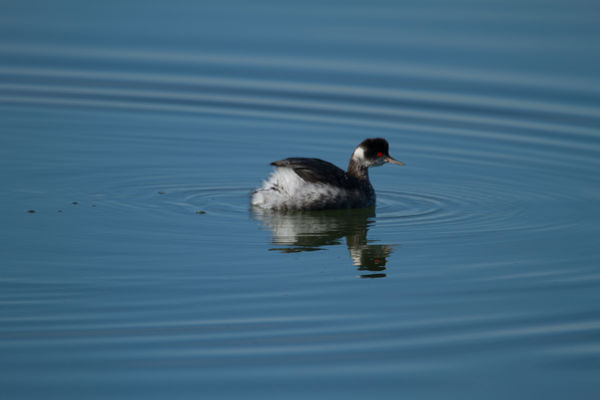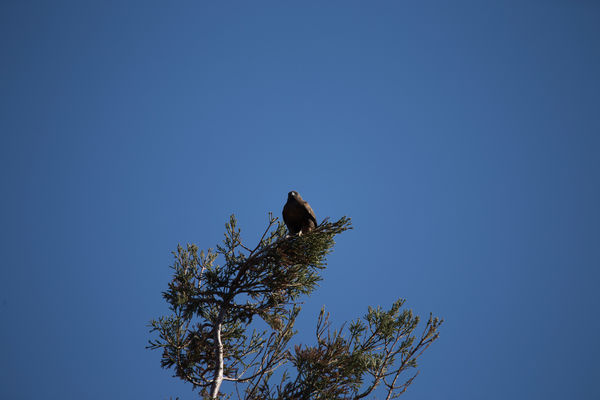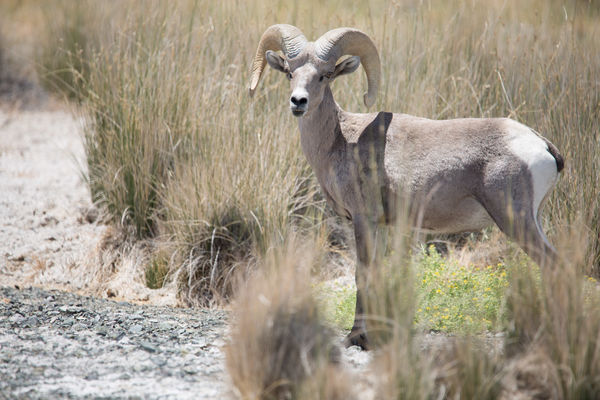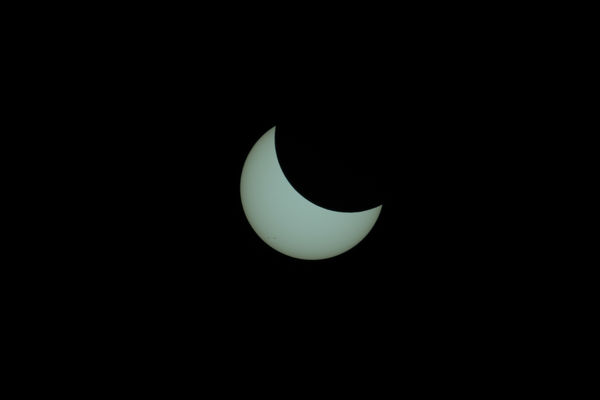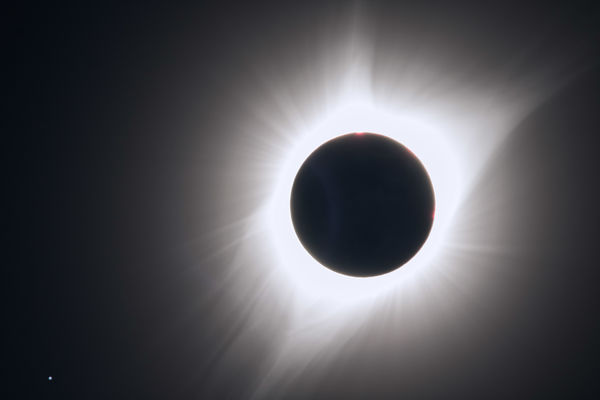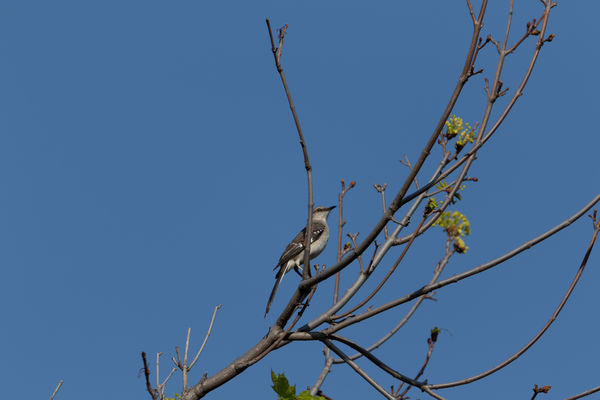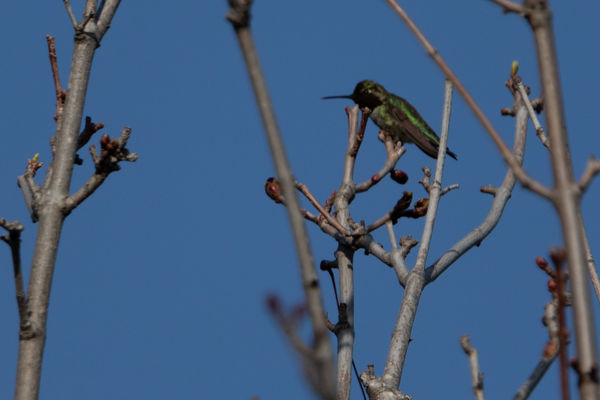Posts for: wesm
May 13, 2018 22:13:18 #
Kmgw9v wrote:
That is believable; but what is the point?
I was responding to the last line of Gene’s post
May 13, 2018 19:01:27 #
Gene51 wrote:
I've been on both sides of the competition thing. ... (show quote)
Two of my best photos from an Iceland trip were taken with my iPhone
May 13, 2018 18:43:37 #
jeep_daddy wrote:
I save layered images as psd. It's the native Photoshop file since I use Photoshop I figure they know what they are doing. But if I am working on a huge image, I'm talking about an image that may be as much as 2GB in size, I'll use tiff. I think psd will only go as large as 1GB but tiff will allow you files sizes up to 2gb
PS has a large file format, .psb. Not sure how large it can go.
Well, quick Google reveals 300K x 300K pixels. One commenter had files > 60GB.
May 11, 2018 00:31:24 #
I'm selling my Tamron 150-600 telephoto zoom. This is the first version of the lens. It's currently on sale at B&H for $800 - 1 cent.
It is lightly used, excellent condition, includes lens hood and tripod collar. See https://www.bhphotovideo.com/c/product/1013956-REG/tamron_a011_c_sp_150_600mm_f_5_6_3_di.html?sts=pi
I'm asking $700.
Enclosed several pictures taken with this lens and a couple of different cameras, 7D series and 5D III. The shots of the bighorn sheep were taken resting the barrel on the window frame of my jeep, the bird shots were all taken with the lens on a monopod, and the solar eclipse shots were taken with a tripod and gimbal head.
Please reply by private message if interested. I will pay shipping to lower 48 states.
Thanks
Wes
It is lightly used, excellent condition, includes lens hood and tripod collar. See https://www.bhphotovideo.com/c/product/1013956-REG/tamron_a011_c_sp_150_600mm_f_5_6_3_di.html?sts=pi
I'm asking $700.
Enclosed several pictures taken with this lens and a couple of different cameras, 7D series and 5D III. The shots of the bighorn sheep were taken resting the barrel on the window frame of my jeep, the bird shots were all taken with the lens on a monopod, and the solar eclipse shots were taken with a tripod and gimbal head.
Please reply by private message if interested. I will pay shipping to lower 48 states.
Thanks
Wes
May 8, 2018 02:45:55 #
CO wrote:
UHH members have already given great advice regarding shutter priority mode and using fast shutter speeds. I just wanted to add that fill flash can really help to lift shadow areas. You might also purchase a speedlight. Dial in some negative flash compensation to add fill flash. Firing a flash at full power can often result in an obvious flash look
I took these photos last weekend and used a studio strobe with a beauty dish and diffuser sock. It really helped to lift shadow areas.
I took these photos last weekend and used a studio strobe with a beauty dish and diffuser sock. It really helped to lift shadow areas.
Using any kind of flash at a martial arts competition or exhibition could be very dangerous to the participants (and the headmaster would likely let you know in no uncertain terms)
May 2, 2018 21:17:41 #
Mike Holmes wrote:
Ok, Thanks for all of the feedback. Hear is the final discussion, Canon t7i camera boby $620, Canon 18-135 refrb.$235, Canon 100-400 Efl II refrb.$1750.Total $2604
I shoot a lot of landscapes, and a bit of wildlife (bighorn sheep, tule elk, and the mockingbirds and hummingbirds that are around in the spring)
For me, the 100-400mm doesn't have the reach, but as I said, I'm pretty inexperienced with wildlife.
I'm a lot more comfortable with landscape recommendations. I think the camera body is fine for now, you can upgrade as your interests and skills progress. But it's NOT a mistake to buy good glass, they will hold their resale value well, camera bodies not so much. Also, for landscapes, buy a GOOD tripod, the best you can afford, and some odds and ends like a remote shutter release. The manual, no-battery release by Canon is just fine for any exposures up to 30 seconds.
I use these lenses for landscapes: Sigma 50mm 1.4L (you might consider the 35mm for your crop sensor). Yes really, I like to use it in portrait mode and take panoramas. Good tripod a must for this. My go-to lens is a 16-35mm f2.8L II zoom otherwise. I also will use a 24-70 or a 70-200 for some landscape shots.
I use a Tamron 150-600mm zoom for wildlife. It's a monster, but if I can keep the shutter speed over 1600, I do OK.
For tripods, I use Gitzo mountaineer series, I have RRS and Gitzo ball heads, and a Nest gimbal head. The Gitzos have worked well for me everywhere from the Badwater Flats of Death Valley to glaciers in Iceland.
I have a website gallery under construction, if you would like you can PM me and I'll send you the link.
Apr 24, 2018 01:05:33 #
Gene51 wrote:
...I routinely configure laptops with 4 drives - two blazingly fast PCIe NVMe m.2 drives and two SSDs
Could you do this with a MacBook Pro? I don't think so, but I'm not sure.
I agree that a thunderbolt connection to an SSD external drive is probably the best option for the OP.
Apr 19, 2018 02:31:31 #
Oregonphotog wrote:
Hello, I'm new to this site so I'm looking forward to learning from all of you. I'm traveling this summer to Prague and know it's a beautiful city to photograph. Can any of you inform me of any places, buildings, or unique things to photograph while there? I know about the Charles Bridge, the castle and the Old Town Square. Thank you for any help or guidance.
Go to a bar in the late afternoon, that has at least three Czech men inside. Ask them what the best beer is. Enjoy the show.

Apr 16, 2018 01:20:46 #
Nikon1201 wrote:
Can anyone suggest a remote shutter release that can be used 10-15 feet away from the camera and is reliable .
I've used Vello Wave, Pluto, Cam Ranger.
And, if you're just slightly ambitions, you can get a $25 wireless portable modem, flash the firmware, to convert it to a CamRanger work-alike. Details at
https://dslrdashboard.info/. It's an open source project, and the documentation could be better organized :(
Apr 16, 2018 01:07:37 #
marciamyers wrote:
New to group and photography...am 67 and purchased... (show quote)
If you are shooting something that's moving fast, you might want to force the shutter speed to be above a certain setting, say 1/1000 sec. Shutter priority will do this, and adjust aperture and ISO to get a reasonable exposure.
If you want shallow depth of field, or conversely want to get the star effect on the setting sun or a bright streetlight, you want to keep the aperture at a certain setting. Aperture priority will do this, and adjust shutter speed and ISO.
BUT, the danger is that aperture priority will set the shutter speed too low to hand hold, or either one will set the ISO so high you get a lot of noise.
I usually shoot manual, but will do shutter priority for birds, planes, etc.
Apr 15, 2018 02:23:20 #
lmTrying wrote:
From one gear head to another, I have no doubt tha... (show quote)
You know, I don't think there's anything at all wrong with trying to understand how a sensor works, but it's really true that it won't be all that useful when it comes to things like composition, or adjusting tone and color in post-processing. It's kind of like trying to understand how to program a spreadsheet by going all the way down to transistors and Josephson junctions. It's really cool when you can understand how analog voltages can translate into two states (false, true or 0,1), or how NAND gates work, but the whole point is to build up a sufficient level of abstraction for the kind of work you need to do. You wouldn't program a spreadsheet in machine language. Likewise, knowing about Bayer arrays isn't going to translate into taking a good photo. You need a different vocabulary.
I suggest starting with:
1. Exposure. What is it? What physical properties contribute to it? How can you manipulate different parts of your camera to get good exposure?
2. Tones. What are blown-out highlights? Crunched shadows? How do you avoid them? (Hint: see #1) What is a histogram, and what does it tell you? What is dynamic range, how can I use it or work around a lack of such? What is a zone system, what does it do, how can I use it?
3. Color. What are primary colors? What are the different color models, and why are they useful? What are complementary colors? How do I use all this to remove color casts, have a pleasing pallette in my image?
4. Composition. There are lots of guidelines, but this isn't really a science. It's much more an art. Nonetheless, there's a lot of thinking to do about what can I do with my camera to augment a strong composition (foreground elements in focus, etc.), balance, choice of lens, creative use of lens distortion?
There are areas where I think some knowledge of sensors is helpful. Things like full-frame vs. crop, low-light performance, noise at high ISO levels. It's my understanding here that the amplification step is what introduces the noise, something like higher ISO means the signal is amplified more, which magnifies the effect of noise, which is always present at some level. But I'm certainly no expert here.
Good luck with your endeavors! I hope you overcome your fear of Photoshop and Lightroom, they're really pretty good at what they do, and you can do a lot with them.
Apr 15, 2018 01:37:30 #
David in Dallas wrote:
I didn't see where anyone defined how many bits are in a byte (8). Someone did mention that "kilo" as in kilobytes was actually 1024 instead of 1000, but that does not extend to any other use of that prefix (and I've always considered it an aberration in the first place).
That's because every other common use of the word implicitly assumes decimal numbers (powers of 10).
However, at the raw machine level, everything is encoded in binary. So powers of 2 are the natural arithmetic units. 1024, or 2 raised to the 10th power, is the closest power of 2 to 1000. Hence KB means 1024 bytes, MB means 1024x1024 bytes, etc.
Apr 15, 2018 01:32:28 #
repleo wrote:
Does the amount of light and dark areas in the capture effect the number megapixels or the megabytes? Or both? Or neither?
No. There are a fixed number of pixels (buckets collecting photons) on the sensor.
The translation to colors and luminosity requires a certain amount of information per pixel, I think 10 or 12 bits per pixel. This is largest contributor to the file size.
But the values of color and luminosity don't matter as long as we're talking about lossless RAW files (no compression). For a completely monotone image (all pixels one single value), you would only need about 4 bytes to represent the whole image (length X width X value of any one pixel). But as an uncompressed RAW file, it's the same size as any other image taken with that camera with the same settings.
Apr 13, 2018 04:48:11 #
Hibler wrote:
I have over 2000 pictures on my iPhone 6 plus how do I get them to a folder on my iMac without using iTunes
If you have a Mac computer:
Connect your phone to the computer using USB-Lightning cable.
If Photos app doesn't start automatically, start it manually.
Download the photos using the Photos app.
Use the Photos app to "Export originals" to folders of your choice.
If desired, or you need space, delete the originals from the Photos app.
If you're running low on disk space, you may have to run this process on smaller bunches until they are all downloaded.
Apr 10, 2018 23:48:02 #
kashka51 wrote:
Thanks
Please, use the "Quote Reply" button.
